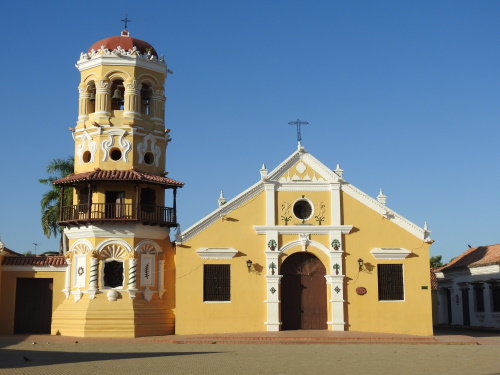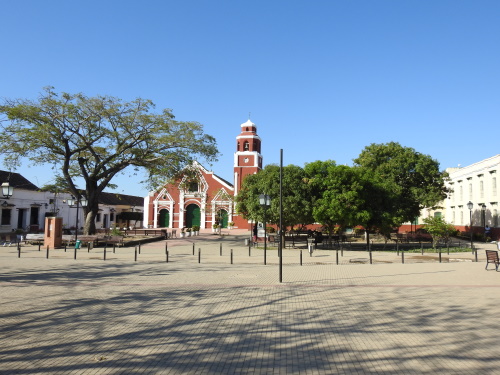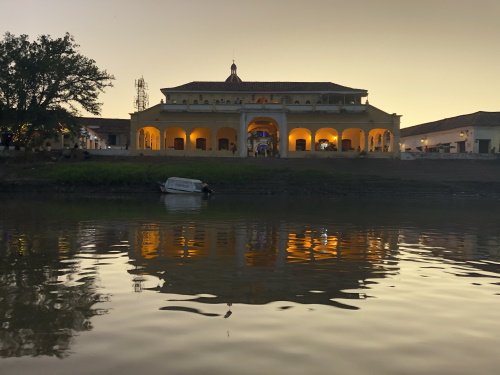Blog WHS Visits
WHS #730: Mompox
Mompox is a bit of logistical nightmare (not the only one in Colombia). I studied different routes beforehand, but in the end I couldn’t think of anything better than taking a bus there from Cartagena and take the same one back 2 days later. The Unitransco bus turned out to be the most luxury one of my Colombia trip – with comfy reclining seats, wifi, toilet and no stops other than in 2 or 3 towns to pick up/drop off passengers. The ride took about 6.5 hours. Google Maps and maps.me totally lost track of the route in the maze of swamps and (former) islands, spitting out various incorrect times of arrival. For the last 1.5 hours the bus takes a really minor road.
Colombia does not have many well-preserved Spanish-colonial remains. But Mompox surely is one of them. It was founded in 1537, less than 40 years after the first Europeans set foot on the South American mainland. Its historic center is beautifully restored and very cozy. It does attract its fair share of tourists, but it is geared more to the boutique style visitor than to backpackers or mass tourism.
When you say that the historic center of Mompox consists of only 3 streets, that seems like a very small area. But these streets are about 2km long and it took me 3 hours to cover it all (with some stops in between on a bench or on a terrace chair to recover from the heat). The part parallel to the Magdalena River is forbidden to cars, so you can walk nicely and quietly. There are various cafes and restaurants, and a huge number of benches to sit on the waterfront. If it gets warmer during the day you can also see large iguanas sunbathing here.
There are 3 squares on the river street, each with its own church. The large yellow Santa Barbara church, with its octagonal tower (see photo 1) is the icon of Mompox. In addition, there are the large La Concepción church and the red San Francisco church (photo 2). There are also several other churches in the streets further from the river: in the 17th century, Mompox had 10 churches, all built by different Spanish monastic orders.
All major churches have their origins in the early Spanish colonization period. What you see now dates from a later date, the first churches were made of wood and much simpler in design. The current churches are brick on the outside, but the interior is wooden in all cases. The carved wooden ceilings are executed in the Moorish style of the Spanish Andalusia. I did my round of Mompox on early Saturday morning. At that time all churches were open - women were busy dusting the banks or putting extra waxes on them, in preparation for Saturday evening mass.
One of the most appealing buildings in the city is the old market building. It has a long veranda at the back, which borders the river. At the front it lies on the main square with the largest church.
I found the hotel and food options especially good in Mompox. I stayed at the service-oriented Casa Amarilla (which goes one level beyond the general Colombian helpfulness). I had good fish meals at the Ambrosia and Comedor Costena. And for a coffee or a drink there are the atmospheric Cafe1700 and the tiny coffeeshop Sol de Agua.
As other reviewers have noticed as well, Mompox does have a more shady side – the modern town seems very poor and there were young children selling snacks when the buses arrived and left between 5 and 6 in the morning. It was even more visible at the village where we had a short stop during the 3 hour boat tour that is offered from Mompox center - a concrete tourist boulevard with viewpoint on the Cienaga de Pijiño has been built there, but the local people are still waiting for the promised paved road. A grim reminder that Colombia can feel very developed and economically prosperous, but many people are left behind.
Els - 2 February 2020


